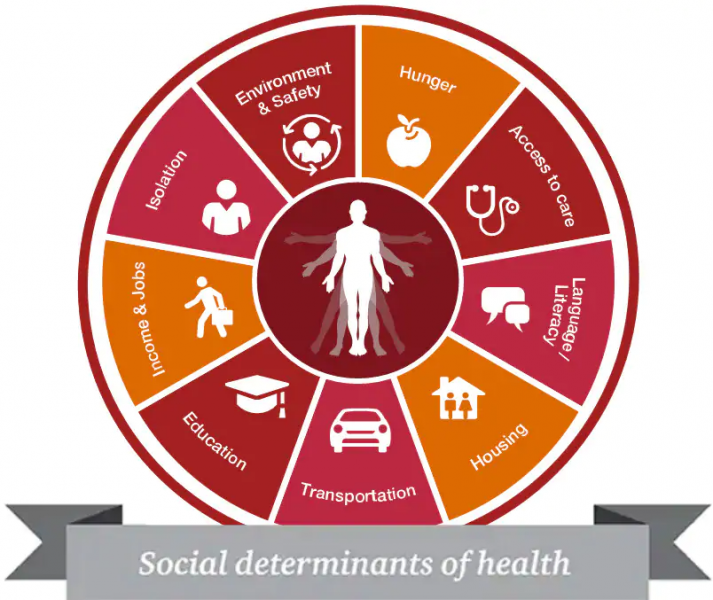Impacts and Influences Outside of Health Centers by Alexa Nguyen
Throughout the course of my service term, I was fortunate to participate in a number of projects and initiatives that exposed me to a wide breadth of health care. From my position as care navigator educating patients about preventive cancer screening to helping with a grant to teaching children and families about the importance of nutrition. However, of the many projects I was involved in, I was struck most by the impact of what we could do to help patients outside of the health center.
In the fall, my fellow members and I who served with Delaware Valley Community Health began reaching out to community organizations who provided services we did not, such as food pantries, assistance with housing, and more. We did so in preparation for the implementation of a screener for social determinants of health, which are factors into which an individual is born or currently lives in that can affect health; these include, but are not limited to education, food security, employment, and access to transportation and housing. Patients come into health centers to address acute or chronic illnesses, but once they walk out of our doors, it is often out of our control whether a patient is in an environment to manage their health completely. But what if we could find a way to bring back some control while a patient is with us?
 That is the goal of screening for social determinants of health. While the patient is with us to address their health, take the time to understand their situation and ask the important questions to get the bigger picture. Once we have that and know what resources they need, we can help them fill out applications or refer them to community organizations who can better serve them, hence the importance of laying down a foundation and establishing relationships with organizations before jumping into the process in order to avoid sending patients off blindly.
That is the goal of screening for social determinants of health. While the patient is with us to address their health, take the time to understand their situation and ask the important questions to get the bigger picture. Once we have that and know what resources they need, we can help them fill out applications or refer them to community organizations who can better serve them, hence the importance of laying down a foundation and establishing relationships with organizations before jumping into the process in order to avoid sending patients off blindly.
These were the interactions that were truly meaningful to me because patients really opened up and talked about the current situations and histories. On the very first day we implemented the screener, I had a patient begin crying while we were completing the screener, explaining that she had been so overwhelmed lately with her situation and felt like she didn’t know what to do. After talking for some time and connecting her with other community health workers, she thanked me profusely for helping her. For many of the patients that we talked to, we were some of the first or only people to ask them these questions, and many of them expressed thanks for our efforts. After these interactions, I felt a sense of accomplishment at being able to extend the help that we, as a health center, could provide out patients.
As I end my service term and move forward in my pursuit of medicine, I will keep these lessons in mind, and I hope to educate others about the importance of taking the time to understand a patient’s entire situation as it impacts and influences their health.
[Image description: infographic detailing social determinants of health. A silhouette surrounded by a circle of icons representing different factors]